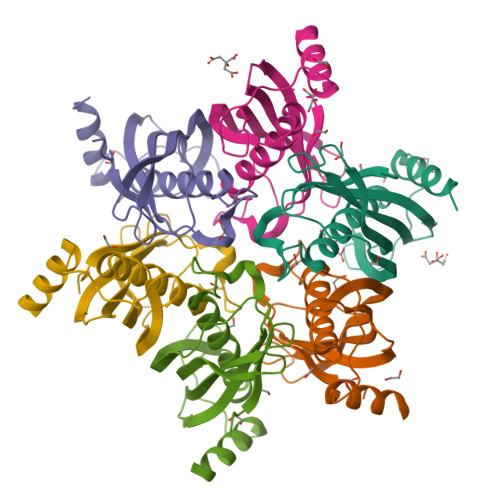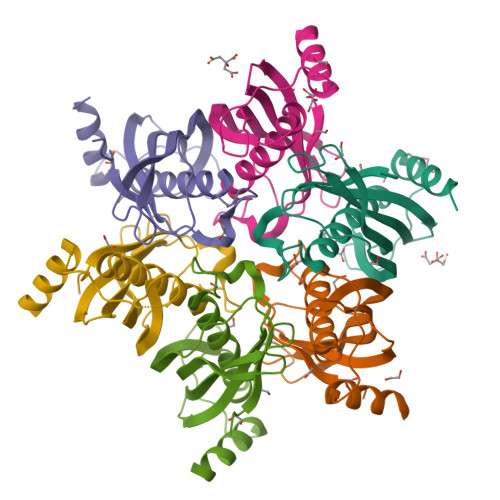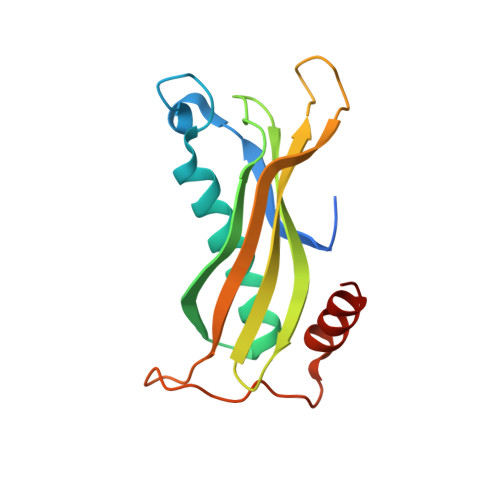Structure of YciA from Haemophilus influenzae (HI0827), a Hexameric Broad Specificity Acyl-Coenzyme A Thioesterase.
Willis, M.A., Zhuang, Z., Song, F., Howard, A., Dunaway-Mariano, D., Herzberg, O.(2008) Biochemistry 47: 2797-2805
- PubMed: 18260643
- DOI: https://doi.org/10.1021/bi702336d
- Primary Citation of Related Structures:
3BJK - PubMed Abstract:
The crystal structure of HI0827 from Haemophilus influenzae Rd KW20, initially annotated "hypothetical protein" in sequence databases, exhibits an acyl-coenzyme A (acyl-CoA) thioesterase "hot dog" fold with a trimer of dimers oligomeric association, a novel assembly for this enzyme family. In studies described in the preceding paper [Zhuang, Z., Song, F., Zhao, H., Li, L., Cao, J., Eisenstein, E., Herzberg, O., and Dunaway-Mariano, D. (2008) Biochemistry 47, 2789-2796], HI0827 is shown to be an acyl-CoA thioesterase that acts on a wide range of acyl-CoA compounds. Two substrate binding sites are located across the dimer interface. The binding sites are occupied by two CoA molecules, one with full occupancy and the second only partially occupied. The CoA molecules, acquired from HI0827-expressing Escherichia coli cells, remained tightly bound to the enzyme through the protein purification steps. The difference in CoA occupancies indicates a different substrate affinity for each of the binding sites, which in turn implies that the enzyme might be subject to allosteric regulation. Mutagenesis studies have shown that the replacement of the putative catalytic carboxylate Asp44 with an alanine residue abolishes activity. The impact of this mutation is seen in the crystal structure of D44A HI0827. Whereas the overall fold and assembly of the mutant protein are the same as those of the wild-type enzyme, the CoA ligands are absent. The dimer interface is perturbed, and the channel that accommodates the thioester acyl chain is more open and wider than that observed in the wild-type enzyme. A model of intact substrate bound to wild-type HI0827 provides a structural rationale for the broad substrate range.
Organizational Affiliation:
Center for Advanced Research in Biotechnology, W. M. Keck Laboratory for Structural Biology, University of Maryland Biotechnology Institute, Rockville, Maryland 20850, USA.


















